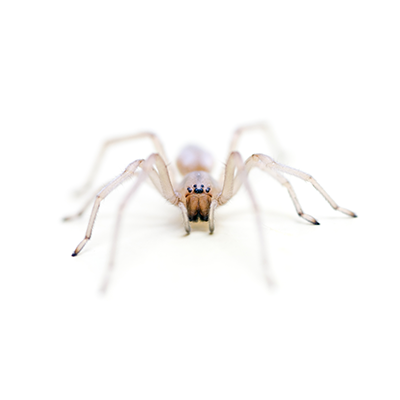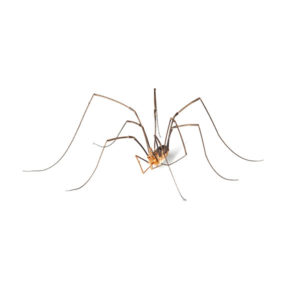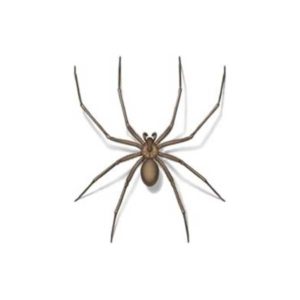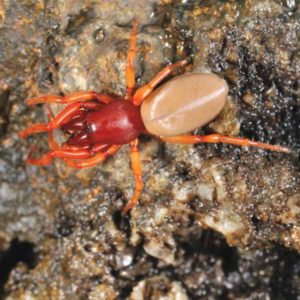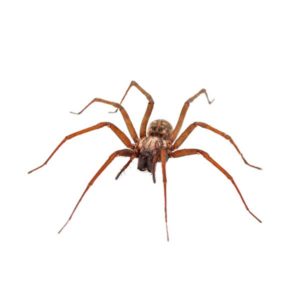Yellow Sac Spider Identification
What Do Yellow Sac Spiders Look Like?
Yellow sac spiders are small to medium in size, typically pale yellow to hint of green or beige. They have a distinct appearance characterized by a relatively unmarked abdomen and darker coloration on the tips of their legs. Unlike many other spiders, yellow sac spiders do not build webs for catching prey but create small silk sacs for resting and laying eggs. Unsure if you are dealing with a yellow sac spider? See our common spider species to help you identify which spider you have spotted!
Signs of a Yellow Sac Spider Infestation
Outdoors, yellow sac spiders can be seen in gardens, under vegetation, bark, in rolled leaves, and organic debris. Yellow sac spiders are often shipped in agricultural products such as grapes and can make their way into homes on produce. It is common to see these spiders inside a home during the fall as they begin to seek warmth from the dropping temperatures outdoors. Yellow sac spiders can easily climb slick surfaces and will construct silk, saclike retreats wherever walls meet other walls or ceilings.
Habitat, Diet, Life Cycle & Bites
Where Do Yellow Sac Spiders Live?
Yellow sac spiders are often found both outdoors and indoors. Outdoors, they reside under leaves, logs, and rocks. Indoors, they prefer high corners, along ceilings, behind pictures and furniture, and in other less-disturbed areas.
Diet of a Yellow Sac Spider
Their diet primarily consists of small insects and other spiders. Yellow sac spiders actively hunt their prey at night rather than catching them in webs.
Life Cycle of a Yellow Sac Spider
The life cycle of yellow sac spiders includes the stages of egg, spiderling, and adult. Females lay eggs within silk sacs, usually in protected locations. The young spiders undergo several molts before reaching full maturity.
Yellow Sac Spider Bites
The bite of a yellow sac spider can be misdiagnosed as a brown recluse spider bite. Bite wounds develop in a similar manner but are much less severe. Reactions, such as swelling, slow healing, and ulcerated sores around the bite site, are similar to brown recluse bites and can be confusing. Most bites will start to improve in a few hours to 2-3 days. Some people are allergic to spider venom as others are to yellowjacket or honey bee venom. Seek medical attention if the symptoms persist or intensify.
Are Yellow Sac Spiders Dangerous?
Yellow sac spiders are not considered significantly dangerous to humans. Their bites can be painful and may cause a mild reaction, but they do not pose a serious health risk.
How to Get Rid of Yellow Sac Spiders?
To control yellow sac spider populations, reduce clutter and seal cracks and gaps in the home’s exterior. Regular cleaning can help eliminate their hiding places and reduce the insect population that serves as their food source. Need help? Contact our professional spider exterminators for fast effective methods.
Yellow Sac Spider Prevention Tips
Prevent yellow sac spiders by keeping your home clean and clutter-free. Ensure that windows and doors are properly sealed, and use insect screens to keep both spiders and their prey out.
Need help with Yellow Sac Spiders control?
FAQs
What Are the Symptoms of a Yellow Sac Spider Bite?
Symptoms of a yellow sac spider bite may include immediate pain, redness, swelling, and in some cases, a slow-healing sore.
Is a Yellow Sac Spider Poisonous?
Yellow sac spiders are venomous, but their venom is not considered dangerous to humans. Bites may cause redness and mild pain but are not medically significant.
What to Do if You See a Yellow Sac Spider?
If you see a yellow sac spider, you can gently capture and release it outside. They are generally harmless and can help control pests.
Where Do Yellow Sac Spiders Nest?
Yellow sac spiders nest in small silk sacs, often found in corners of walls and ceilings, behind furniture, and in other secluded areas.
Should I Worry About Yellow Sac Spiders?
Generally, there’s no need to worry. While their bites can be irritating, they are not aggressive and are beneficial in controlling insect populations.

